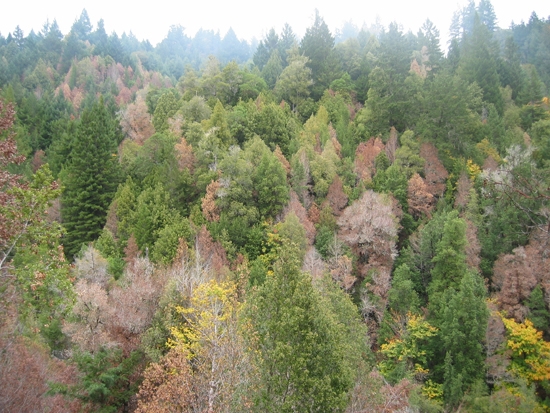UC Cooperative Extension is hosting a sudden oak death bioblitz April 25-28 in Northern California, in which a corps of volunteers will fan out across the wildland areas to track the progression of the devastating disease, reported Derek Moore in the Santa Rosa Press Democrat.
Sudden oak death is caused by the pathogen Phytophthora ramorum, which was inadvertently introduced to California forests on nursery stock in the 1990s. The disease has killed up to 50 million trees (primarily tanoak, coast live oak, California black oak, Shreve's oak and canyon live oak) from Big Sur to southwest Oregon.
Kerry Winiger, the UCCE sudden oak death outreach coordinator, is organizing this weekend's bioblitz in Sonoma and Mendocino counties.
Wininger said one of the highlights of this year's surveys is the unveiling of a new test for the European strain of Phytophthora ramorum in time to possibly thwart its spread. The new strain has been detected in Oregon.
“We want to nip it in the bud, if it's here,” Wininger said.
Sonoma County is still reeling from deadly wildfires, making the spread of SOD infection seem to some like a lower priority.
But Winiger said that oaks, as a keystone species, are crucial to the overall health of an ecosystem.
“It's like an arch,” she said. “If you lose a stone in the arch, everything else in the ecosystem is affected.”
